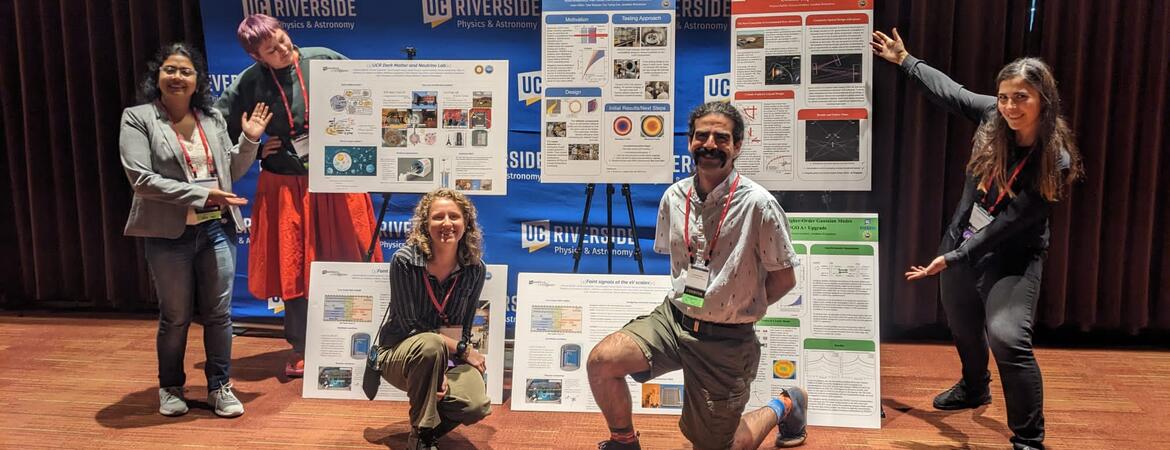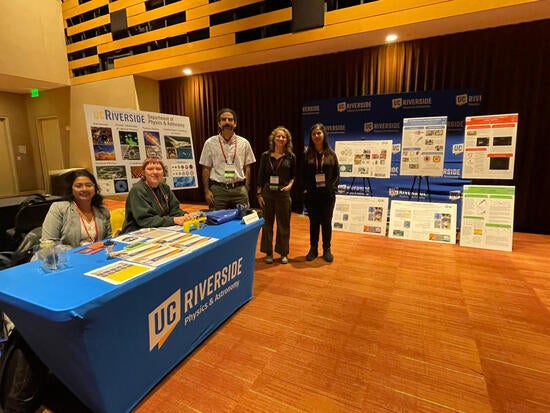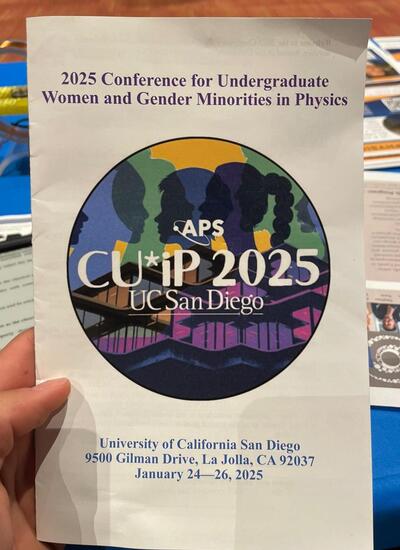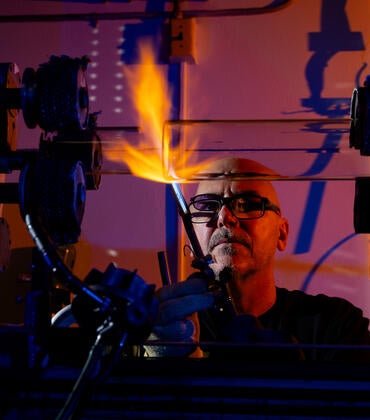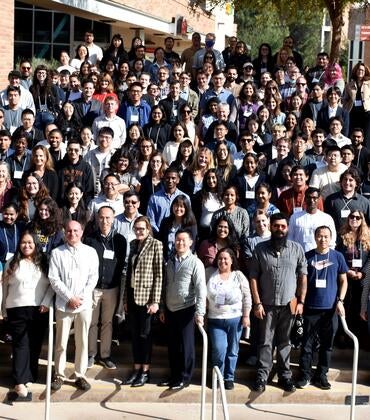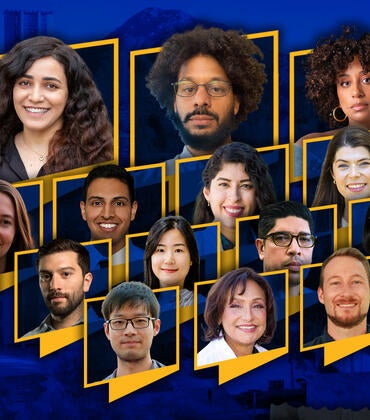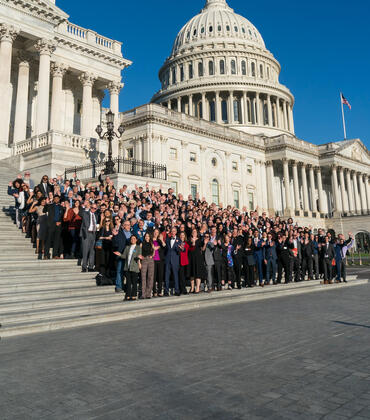For the first time, the UCR Department of Physics and Astronomy provided full financial support for two postdoctoral researchers and three graduate students to attend the Conference for Undergraduate Women and Gender Minorities in Physics that was held last month in San Diego, California.
The UCR contingent attended one day of the three-day conference to secure the interest and attention of dozens of undergraduate students currently considering graduate programs.
Eliza Gazda, a postdoctoral researcher working with Steve Choi, an assistant professor of physics and astronomy, took the initiative to get in contact with the conference organizing committee, allowing for the UCR contingent to participate as volunteers. Along with postdoctoral researcher Michela Lai, she served as a judge for the conference’s poster session.
“It was pretty clear that students from smaller colleges could really benefit from extra help when it came to presenting their posters, while larger colleges tended to have more polished work,” Gazda said. “It was great for us to be involved in giving feedback, helping them improve their posters, presentations, and how to handle questions.”
Lai, who works with Shawn Westerdale, an assistant professor of physics and astronomy, said she was happy to see the UCR contingent take the initiative to bring more graduate students to campus. The goal of the UCR Department of Physics and Astronomy of increasing diversity in STEM is commendable, she said.
“We are doing a good job pushing that mission forward,” Lai added. “On the posters I got to judge, I noticed some common themes across different fields, especially in machine learning, which I think reflects the current trends in research. Some of the posters were already at a graduate level, and a few of them were particularly impressive.”
Besides Gazda and Lai, the UCR team included graduate students Ananya Paul, Pooyan Goodarzi, and Alexandra (Sasha) Korotneva.
The goal of the American Physical Society Conferences for Undergraduate Women and Gender Minorities in Physics (APS CU*iP) is to support undergraduate women and gender minorities in their pursuit of physics. It provides them with the chance to attend a professional conference, gain insights about graduate school and careers in physics, and connect with peers of all ages to share experiences, advice, and ideas. CU*iP, pronounced “q-ip” or “q-wip,” is held each year.
This year, CU*iP was held in person at 14 institutions and labs across the United States. The conferences, which are supported by the National Science Foundation and Department of Energy, are all three-day regional events designed for undergraduate physics majors. The event the UCR team attended was held at UC San Diego.
“The conferences invite undergraduate women, gender minorities, and students who may not often see themselves represented in STEM,” said Paul, who works with Kenneth Barish, a professor of physics and astronomy.
During the San Diego conference, Paul served as a panelist on the National Lab Panel and shared her experience working at Brookhaven National Lab.
“Participants have the chance to connect with mentors, explore educational and career opportunities, and network with fellow physics students to share insights and experiences,” she said.
Godarzi, who works with Jonathan Richardson, an assistant professor of physics and astronomy, said the focus of the team’s time at the conference was at the booths, which featured different programs from various campuses offering graduate programs in physics.
“There were desks where people could answer questions about graduate school and careers, as the conference’s primary emphasis is on professional development and career growth,” he said. “Many attendees asked us questions about graduate school, as well as specific programs UCR has in physics and astronomy.”
Paul added that the team received many questions about what graduate school is and how to apply to one.
“Such questions came mostly from students at smaller liberal arts colleges who tend to be unfamiliar with graduate programs, as their schools only offer undergraduate degrees,” she said. “Many of these students didn’t realize that in graduate school you can get paid as a teaching assistant or research assistant through a small stipend.”
Korotneva, who works with Igor Barsukov, an associate professor of physics and astronomy, was pleased to find several undergraduate students curious about the different research areas within UCR’s Department of Physics and Astronomy.
“Our program is diverse, covering fields like high energy physics, condensed matter physics, astrophysics, and astroparticle physics,” she said. “Most of the students weren’t aware of these different areas. A few were interested in astrobiology, which is offered by the Department of Earth and Planetary Sciences. We made sure to introduce them to that option.”
Flip Tanedo, an associate professor of physics and astronomy at UCR, encouraged the team’s participation at CU*iP and was pleased the team took the lead as recruiters for UCR’s Department of Physics and Astronomy.
“Unlike other universities who may send faculty, I think it is impactful that UCR can show prospective students that these are the future colleagues and peer mentors they can look forward to when they come to UCR to study physics and astronomy,” he said. “While many UCR students attend similar meetings as participants, our graduate students and postdocs attended as envoys of our university, taking on the labor usually associated with a department’s admissions committee or outreach committee.”
